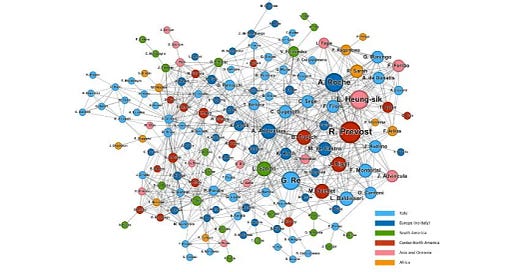On May 8th 2025, Robert Francis Prevost became Pope Leo XIV, when he was elected on the second day of the papal conclave.
As someone who was only casually following the pre-conclave speculation, I didn’t recognize Prevost’s name, as everyone had been saying the top frontrunners were the Filipino Luis Antonio Tagle and the Italian Pietro Parolin. A historian of the Catholic church was even quoted by ABC news as commenting that the prospect of an American pope would be very unlikely.
As it turned out, the new Pope is both an American and also a math major. So he might enjoy knowing how a group from Bocconi University in Italy used math to correctly guess that he would become the next Pope.
Network science combines elements of graph theory and data science to study the properties of networks, which are basically maps of relationships.
In this case, the researchers set out to map the relationships among the College of Cardinals.
They determined relationships based on 3 sources:
Administrative relationships: cardinals who are linked by working together on councils, academies, or in the curia
Spiritual relationships: cardinals who are linked by having ordained one another
Informal relationships: cardinals who are linked by mentorship, friendship, or ideological similarities
But not all relationships are equal. Some cardinals formed relationships across multiple continents and different political stances, while others seemed to form relationships with those closest to them. After factoring in these different strategic role, the researchers ranked Luis Antonio Tagle as having the highest “coalition-building capacity”, in that he seemed to have the best shot at forming alliances and bridging together different social groups.
However, Prevost ranked highest in terms of eigenvector centrality, aka “status”. He was connected to a high number of cardinals who themselves were connected to a high number of cardinals. In other words, he formed many relationships with the most influential people.
Importantly, the researchers weren’t actually trying to predict the Pope (placing bets on this is illegal in Italy), instead they were trying to understand the underlying structure of power and relationships in the Vatican. What was once shrouded in clandestine white smoke is subject to the same mathematical order as all other relationships.
If you’d like to read more about the study, here is the link! The more technical paper is not yet available as of May 12.
Those interested in reading more about network science should check out the book Dots and Lines by Anthony Bonato, I blurbed this book and it was genuinely fantastic!
Thank you for reading :)




